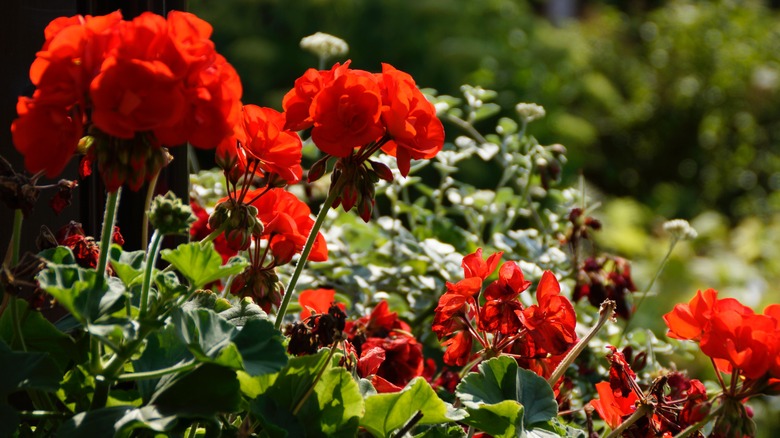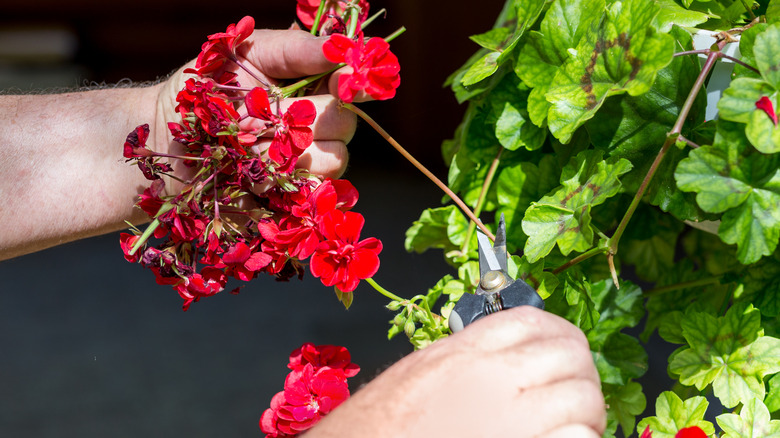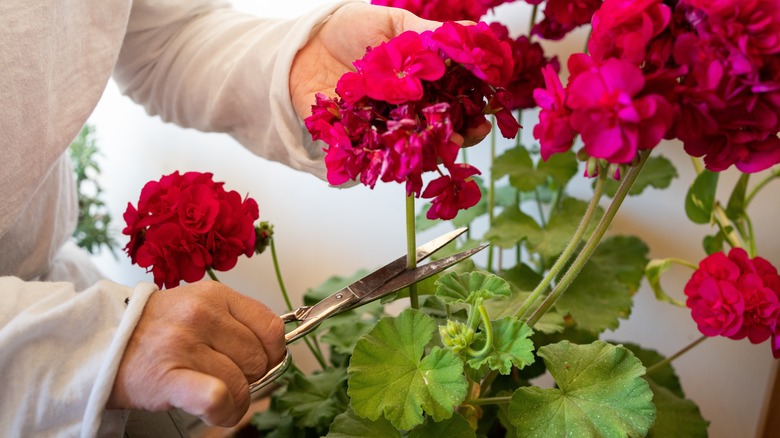The Best Method For Deadheading Geraniums
Renowned for their vibrant and enchanting blossoms, geraniums, also known as pelargoniums, are a favorite among home gardeners looking to add color and fragrance to their landscapes. However, you must deadhead geraniums frequently to prolong your geranium plant's flowering cycle. Deadheading removes faded or spent flowers from the plant, helping prevent the diversion of its energy toward producing seeds. This redirection stimulates new bloom growth, improves the plant's overall appearance, and reduces its disease susceptibility.
While deadheading geraniums is quite easy, it goes beyond mere flower plucking. To achieve optimal results, you must directly break off the dead flower stem right below the joint to promote new growth. Although using your hands is generally sufficient, go for a pair of shears for the bushier blooms. But merely deadheading your plant once won't deliver sufficient results. You'll need to establish a deadheading routine. For instance, cutting off stems daily will promote a more robust geranium plant, though deadheading at least every other week will help keep your plants blooming more reliably as well.
How to deadhead geraniums
The best time to deadhead your geranium plant is when it starts drooping or when its blooms turn brown. All you need to do is locate the point at which the stem of the dead flower meets the geranium's main stem. Such points are generally situated above the leaf nodes. Now, hold the main stem in one hand and use your other hand to gently snap off the dead flower's stem at its point of contact.
Alternatively, you can also use pruners and nip off the wilted stems down to the healthiest leaf growth. This should help retransmit the plant's resources back to flowering, causing the geranium to bloom again in a few days. As for the removed dead flowers, they can be disposed of by adding them to your compost pile after excluding any diseased or pest-infested blooms.
Geranium deadheading tips
Ideally, you should remove the wilting and drooping geranium flowers the moment you notice them. It's best not to remove more than ⅓ of your plant at any given time to maintain its lush look. As for the time, ensure you deadhead only in the early mornings or evenings when the weather is relatively cool. Make sure that your geranium plant is dry before deadheading it to prevent the transmission of bacterial and fungal diseases from plant to plant.
For gardeners in hardiness zones 10 and 11, geranium plants are perennial rather than annual and will require slightly different pruning tactics. If you're able to grow geraniums as perennials, pruning your plants when they stop flowering is essential. Simply cut down the plant to a few inches above the soil, keeping its new growth points intact. This should help it conserve energy for the upcoming spring flowering season. Depending on your growth zone, the pruning period will fall between August and October.


